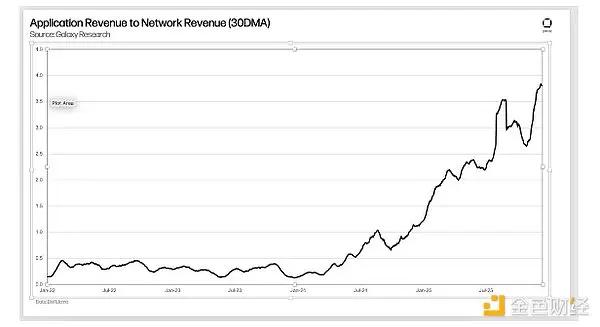Title: "Macro Dose - Crypto Markets Crashing: What You Need to Know"
Author: Alea Research
Translated by: Tim, PANews
In yesterday's report, we discussed several structural changes that have occurred in the Altcoin market over the past few months. Today, with the US market yet to open, the total market capitalization of the Crypto sector has fallen by nearly 9%, with Bit dropping more than 7% in the past 24 hours. Although Bit has rebounded to the $89,000 level after hitting a new low above $87,000, the current trend is showing signs of fatigue.

In today's report, we will once again examine the market trend, try to clarify the causes of the current Altcoin downtrend, and analyze the necessary conditions for the market to regain a bullish sentiment.
Current Macro and Crypto Environment
Over the past year, the overall trend of the Crypto market has been highly correlated with Bit. Since the second quarter of 2024, Bit and Altcoins have entered a period of sideways consolidation for about half a year. With the arrival of the US presidential election in November as a catalyst, the entire Crypto market has seen almost across-the-board gains. However, this pattern has recently reversed sharply, with Bit and Altcoins showing a rapid divergence in performance.

This sell-off does not have a clear trigger specific to the Crypto sector. We have discussed in detail the Libra token collapse incident and the recent attack on Bybit in our member newsletters and emails. The chain reaction triggered by the Libra token has severely impacted the Solana ecosystem, with the SOL token plummeting nearly 45% in the past month. The Bybit incident has now been largely brought under control, with the exchange claiming to have raised enough ETH to fill the $1.4 billion funding gap.
There was even positive news yesterday: Castle Securities announced that it will increase its investment in the Crypto sector, which may be related to the gradual clarification of the regulatory environment.
Previously, Robinhood disclosed that a third of its fourth-quarter revenue came from Crypto services and that it plans to continue to increase its investment in this area, but the market has reacted coolly to such positive news about traditional financial institutions entering the sector.

Castle Securities announced that it will increase its investment in the Crypto market making sector
The current market may be more focused on news from the US government, and is holding a reserved attitude towards any policy initiatives that do not reach the "Strategic Bit Reserve" (SBR) level, even seeing them as opportunities to sell on "good news exhaustion". This tendency can be seen from the market's reaction to the statements and executive orders on Crypto from figures such as former President Trump, David Sacks, the head of Crypto and AI affairs, and Senator Cynthia Lummis.
The current market volatility is largely likely related to Trump's policies and the unexpected reactions they have triggered. In some ways, the former president's delivery on his campaign promises has been polarized: some policies that are core concerns of the market have fallen short of fulfillment, while others have seen unexpected progress, and this contradiction is exacerbating market uncertainty.
1. Tariff Policy
Since taking office, Trump has repeatedly flip-flopped on tariffs: first announcing tariffs on Canada and Mexico, then temporarily suspending them; then implementing new metal tariff policies affecting the two countries; and recently claiming that he will ultimately impose full tariffs on them. This ever-changing approach not only increases market uncertainty, but may also lead to a "boy who cried wolf" policy credibility dilemma.
2. Immigration Policy
The Trump administration has deported fewer illegal immigrants than previous administrations. This may be a positive signal for the market, as large-scale and rapid deportation could lead to market disruptions in labor-intensive industries such as agriculture, residential construction, and services.
3. Foreign Policy
The Trump administration has shown a tendency to distance itself from Europe, bypassing regional countries like Ukraine to negotiate directly with Russia. While this may not be a major negative for the market, it has caught some observers off guard.
The market has always disliked uncertainty, and the Trump administration has fully demonstrated its ability to create uncertainty in its first month in office. Since the beginning of the year, US stocks have underperformed European stocks and US-listed Chinese stocks, with the Nasdaq index nearly falling into negative territory. This may reasonably explain why the Altcoin market has performed poorly in the first quarter: although Michael Saylor's "strategic hoarding" has provided liquidity support and ETF inflows, keeping Bit relatively high, the overall Crypto market performance has still lagged significantly.

Shifting Targets, Debt Over Equity?
The weak performance of both Altcoins and US stocks may be closely related to the Trump administration's policy focus shifting towards lowering bond yields rather than boosting the stock market (not to mention Bit prices, as the White House has paid little attention to the overall performance of the Crypto market).
If lowering bond market yields is seen as a measure of policy success, the current situation may be more optimistic than the perception based solely on stock market performance.

In the current macroeconomic environment, the US government needs to strike a balance between short-term interests and long-term goals, as a stock market frenzy may not align with the success criteria set by the Trump team. Over time, the market may gradually adapt to the unconventional operations of the current administration. On the positive side, if regulatory barriers can be substantially removed (as hinted by DOGE), it may unleash more economic vitality. But in the short to medium term, large-scale government layoffs and budget cuts may have a contractionary effect on the economy and divert some of the funds that could have been injected into the market.







